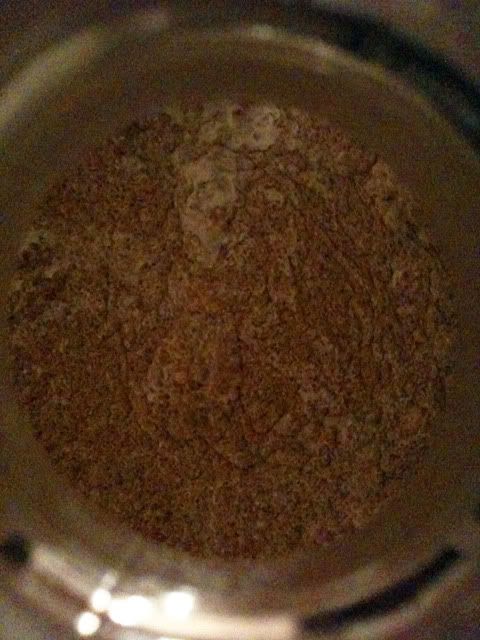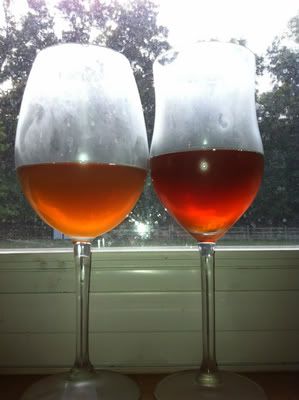- Recipe Type
- All Grain
- Yeast
- WY1056
- Yeast Starter
- of course
- Additional Yeast or Yeast Starter
- WY3763
- Batch Size (Gallons)
- 6
- Original Gravity
- 1.060
- Final Gravity
- 1.009
- Boiling Time (Minutes)
- 90
- IBU
- 16
- Color
- 16
- Primary Fermentation (# of Days & Temp)
- 14 days at 65°F
- Secondary Fermentation (# of Days & Temp)
- 365 days at 65°F
- Tasting Notes
- Big malty, sour, tangy and fruity with an underlying cherry flavor.
Amount______________Item
5 lbs..........Vienna Malt.............................(3.5 SRM)
4.5 lbs.......Pilsner (2 Row) Bel....................(2.0 SRM)
3 lbs..........Munich Malt - 10L....................(10.0 SRM)
8.0 oz........Aromatic Malt..........................(26.0 SRM)
8.0 oz........Cara 45 (Caramunich) Malt.........(56.0 SRM)
8.0 oz........Special B Malt.........................(180.0 SRM)
8.0 oz........Wheat Malt, Bel........................(2.0 SRM)
1.00 oz......Goldings, East Kent [5.70 %] (60 min) (16.0 IBU)
1 lb...........Malto Dextrine (optional)............in secondary
70% efficiency
Sacch rest at 154°F for 60min.
This is a Rodenbach Grand Cru inspired Flander's Red recipe based on Jamil Z's recipe and procedure. You can ferment to completion with the 1056, then add the sour blend, or for a more sour flavor add the 3763 with the 1056. Upon tasting during conditioning, a bigger sourness can be achieved by adding malto dextrine, too.
Additionally, I add a self-toasted oak dowel through a bung at the beginning of aging for a great oak cask flavor, but of course this is optional.
5 lbs..........Vienna Malt.............................(3.5 SRM)
4.5 lbs.......Pilsner (2 Row) Bel....................(2.0 SRM)
3 lbs..........Munich Malt - 10L....................(10.0 SRM)
8.0 oz........Aromatic Malt..........................(26.0 SRM)
8.0 oz........Cara 45 (Caramunich) Malt.........(56.0 SRM)
8.0 oz........Special B Malt.........................(180.0 SRM)
8.0 oz........Wheat Malt, Bel........................(2.0 SRM)
1.00 oz......Goldings, East Kent [5.70 %] (60 min) (16.0 IBU)
1 lb...........Malto Dextrine (optional)............in secondary
70% efficiency
Sacch rest at 154°F for 60min.
This is a Rodenbach Grand Cru inspired Flander's Red recipe based on Jamil Z's recipe and procedure. You can ferment to completion with the 1056, then add the sour blend, or for a more sour flavor add the 3763 with the 1056. Upon tasting during conditioning, a bigger sourness can be achieved by adding malto dextrine, too.
Additionally, I add a self-toasted oak dowel through a bung at the beginning of aging for a great oak cask flavor, but of course this is optional.




